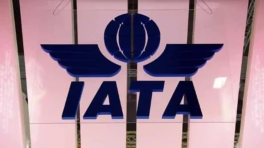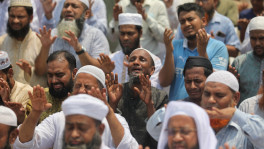Poverty reduction hinges on more allocations, utilisation

The extreme poverty rate in Bangladesh stood at 12.5% in FY21 albeit the World Bank forecasted it to go down to 9.4% based on the $1.9 poverty line per day, meaning the country's 3.1% people could not come out of the poverty threshold during the time because of Covid-19.
In this situation, it will be difficult to reach the target of bringing down the extreme poverty rate to 7.4% by 2025 by taking another 85 lakh people out of poverty, experts said at a webinar on Thursday.
To achieve this poverty reduction goal of the Eighth Five-Year Plan, they called for increasing allocations in the social safety net, and education and health sectors, as well as ensuring the best use of these allocations, launching new programmes and giving special attention to urban poverty.
The discussion titled "Fast Changing Poverty Dynamics: Issues and Priorities", was jointly organised by Brac, UNDP and The Daily Star.
Presenting keynote at the event, Palash Kanti Das, director at Ultra Poor Graduation Programme of Brac, said social safety programmes and financial inclusion strategy have played a vital role in alleviating poverty in the recent years in Bangladesh, while steady flow of remittances and job creation, mainly in export lead industries, and informal sectors have also been identified as poverty alleviating factors.
Quoting data from the World Bank, he said the extreme poverty rate in Bangladesh was 11.9% in FY19, considering the poverty line $1.9 per day. It increased to 12.9% in FY20 and dropped to 12.5% in FY21.
If there was no Covid-19, poverty would drop to 9.4% in FY21. Based on the assumption of the World Bank, he found that 3.1% of people became poor because of the pandemic.
The government set a target to bring extreme poverty down to 7.4% in 2025 – the last fiscal year of the Eight Five Year Plan. Some 85 lakh people must overcome the lower poverty line to achieve the target.
The paper found the chronic lower allocation for education, health and social safety net programmes as major obstacles to the lower rate of eradicating multidimensional poverty, Palash Kanti noted.
The allocation for education was 2.3% of the GDP in FY18, which increased to 2.5% in FY19 and dropped again to 2.3% in FY20.
Allocations for social protection schemes dropped to 1.2% of GDP from 1.3%, while the allocation for health reduced to 0.6% of the GDP from 0.8%, he also said.
The allocation increased in the nominal term, but it remained the same or reduced compared with the GDP size.
Dr Shamsul Alam, state minister for planning, said at the event the economy achieved a steady growth over the last decade, which helped to eradicate poverty. But the rate of poverty alleviation has reduced.
Job creation rate in line with economic growth also reduced seriously, he added.
The increase in remittance inflows has a major contribution to poverty reduction, which created employment in the rural areas, he also said.
"Development of roads, infrastructure, power and electricity, extension of social service programmes and increase in access to cell phones, labour migration from low-wage areas to high-wage areas are the major factors of poverty alleviation."
Mahfuz Anam, editor of the Daily Star, recommended a direct fund transfer for the extreme poor, similar to amounts of the subsidies provided by the government for the private sector.
The extreme poor are facing tremendous challenges with Covid-19 making their life more difficult.
"The poor have no organisation, they do not have representation in parliament. As they have no representation anywhere, it is up to us, the media and the civil society to fight for them," Mahfiz Anam noted.
Identifying the concept of doubling the poverty rate owing to the Covid-19 pandemic as a myth, Dr Binayek Sen, director general of Bangladesh Institute of Development Studies, explained that the rate of poverty increased in the first lockdown, but it came down subsequently.
He recommended a panel survey in urban and rural areas to find Covid-19 impacts on poverty.
Dr Sen stressed focusing on multidimensional poverty and vulnerable non poor people over a simple poverty rate.
Extreme poverty rate in Bangladesh was 14% in 2016, considering the $1.9 poverty line per day, but the stunting rate was 28%, double the extreme poverty rate, he also said.
About 38% of people in Bangladesh are living above the poverty line, but they remain vulnerable to being poor, he pointed out.
"It means if you slightly calibrate the poverty line up from $1.9, a large number of families would fall into poverty," he added.
"It is essential to assess vulnerability in the poverty alleviation process. And, we have not found any solution to tackle the vulnerable non-poor."
Recommending expanding the coverage of social safety net programmes in urban areas, he said about 40% of people are living in urban areas, but only a few programmes under the social safety net are available to increase livelihoods of urban people.
Sudipto Mukerjee, resident representative of UNDP in Dhaka, said the ongoing Covid-19 pandemic is a wakeup call for social protection in Bangladesh and other developing countries.
The pandemic had put the livelihoods of millions of urban poor at hazard. Many suffered job losses and income erosion, he added.
He recommended expanding the coverage of social protection programmes in urban areas and some programmes for vulnerable non-working poor, children and elderly people.
Dr Imran Matin, executive director at BRAC Institute of Governance and Development, identified extreme poverty as a trap and social safety net as transient phenomena.
He said the poor overcome a problem through a social safety net initiative and then they are trapped into another problem.
"Small investment and small intervention will not work. A big push is required to sustain poverty alleviation," he said.
Dr Nazneen Ahmed, Country Economist, UNDP Bangladesh, suggested special programmes for the married girls who are willing to continue their education.
She said about 30 millions of people are living in families where no female member completed sixth grade of education.
Most female labours are working in the garment sector. But the sector is releasing labour. Most of them aged over 35 fail to get back to their jobs, she added.
Asif Saleh, executive director at Brac, recommended utilising the allocation for the poor through proper targeting.
He said, "I think the issue is not only about allocation. The amount of allocation should be targeted properly."


 Keep updated, follow The Business Standard's Google news channel
Keep updated, follow The Business Standard's Google news channel














